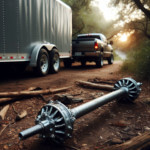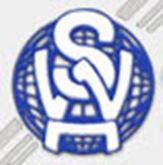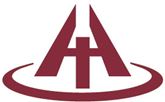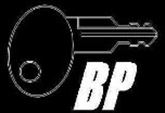 When trying to find the correct replacement parts for trailer axles we often run into many various terms and terminology used in the industry. We often get questions to clarify or explain what some of these terms, what they mean and how they are relevant in the specifications and descriptions. The below summary is provided to help aid in the understanding and use of these terms.
When trying to find the correct replacement parts for trailer axles we often run into many various terms and terminology used in the industry. We often get questions to clarify or explain what some of these terms, what they mean and how they are relevant in the specifications and descriptions. The below summary is provided to help aid in the understanding and use of these terms.
Arm Lengths
The length of the torsion arm as measured from the axis of the shaft to the axis of the spindle.
Axle Capacity
The beam load capacity the axle supports. This value may be derated based on the axle combination, hub face and suspension center dimensions, if the recommended dimensions are exceeded. (See G.A.W.R. for other rating information)
Axle Combination
The number of axles to be used in your application.
Axle Suspension
A system which provides a method for absorbing shock as well as attachment of axles to a vehicle frame. (See FLEXIRIDE® or LEAF SPRING)
Backing Plate
The circular, plate-shaped brake component, bolted to the brake flange or directly welded to the axle, to which all other brake components are attached.
Brracket Dimension
The dimension from the outside of one mounting bracket to the outside of the opposite mounting bracket.
Brake Actuation
The method by which a brake is powered. Electric and Hydraulic are the most common models.
Brake Flange
A flat plate, welded either to the spindle or the axle, to which the brake assembly is bolted.
Brake Magnet
An electromagnet within the brake assembly that when actuated initiates the braking action.
Breakaway System
A system that employs a battery to energize the electric trailer brakes in the event of a separation of the trailer from the tow vehicle.
Camber
The angular relationship of the wheel to the road surface in the vertical plane. Axles are typically built with a pre-determined bend in the tube that compensates for the expected deflection under load. Flexiride half axles for capacities over 1,000 lbs have a built-in camber angle of 1.5°; the lower capacities half axles have a straight bore (no camber necessary).
Derate
When an axle is built to exceed the recommended dimensions, the rated capacity will be diminished. Also, Flexiride axles and half axles are rated for single mounting; when used in a tandem arrangement, they need to be derated by 20%.
Double Eye
Leaf springs with eyes formed in each end of the spring.
Drop Height
The distance from the center of the spindle (center of the tire) to the center of the axle tube on a leaf spring type axle.
Drop Spindle
A forged spindle with a cross-section that allows the axle tube to be offset from the axis of the wheel. Used for applications which require lower frame and deck heights.
Electric Brake
A mechanical braking system used in conjunction with drum brakes that actuates the stopping mechanism with electromagnets and levers. The electrical source is supplied from the tow vehicle by an electronic brake controller.
Equalizer
A suspension component that allows transfer of a portion of the load on one axle to the adjacent axle(s) when traversing an uneven surface.
Flexiride®
Torsion type axles that feature an integral rubber suspension system.
Lube Feature
A bearing lubrication system that consists of grease fitting installed into the end of each trailer spindle. A channel is provided to distribute grease to the inner bearing.
Gross Axle Weight Rating (GAWR)
The rated capacity of the vehicle running gear as defined by the lowest rated component in the system. Those components considered are the axle beam, the suspension system, the wheels or rims and the tires.
Hanger Height
The distance (in inches) from the underside of the frame rail (top of hanger) down to the center of the bolt hole.
Hub & Drum
A plain hub that has a drum attached, either integrally cast or bolted together, for use with a brake assembly.
Hub (or Plain Hub)
The axle component that contains the bearings, and to which the wheel is attached. Hubs or plain hubs are used on axles without brakes.
Hub Face
The dimension from the wheel mounting surface on one hub to the wheel mounting surface of the opposite hub.
Leaf Spring
A spring composed of several flat steel strips, bundled together to form a shock absorbing, load carry suspension component.
Leaf Spring Axle
Axles which use leaf springs for the method of suspension.
Lever Arm
A brake component that has the magnet at one end, a pivot point, and a linkage on the opposite end. When an electrical current is applied to the magnet, the lever arm expands the brakes shoes against the drum.
Overslung
Leaf springs mounted on top of the axle. Overslung spring position does NOT work with a drop spindle.
Parking Brake Feature
A manually operated braking system that allows a mechanical lever to be actuated by means of a cable to set the brake. This system is similar to the emergency or parking brake on an automobile. In trailer applications, the manual actuating lever is generally near the trailer hitch. By activating the trailer brakes, the parking brake feature can be set to assist in holding the trailer in place.
Reverse Orientation
The longest vertical surface of the bracket is closest to the hub or outboard end of the axle.
Rim Diameter
The dimension of the tire bead seat areas on a wheel or rim.
Shackle Link
A suspension component that connects the spring to the trailer frame. The double pivot action of the shackle links accommodates spring articulation and allows the spring to move freely.
Side Mount
A method of mounting Flexiride axles when the trailer frame is built from tubular members. The mounting bolts are assembled through the side of the bracket and side mounting hangers or other suitable mounting plates.
Slipper Springs
Leaf springs that feature an eye formed at the front end and a curved surface on the rear end. The rear end of the spring bears upward against a wear resistant surface in the equalizer and/or rear hanger.
Spindle
The end section of an axle to which the hubs are fitted.
Spring Center
The dimension from the center of the leaf spring to the center of the opposite spring on an axle.
Spring Hanger
A suspension component attached to the trailer frame to which is bolted either a spring eye, shackle link, or equalizer.
Standard Orientation
The longest vertical surface of the bracket is facing toward the middle of the axle.
Start Angle
The angle of the torsion arm relative to the horizontal plane, stated in the unloaded condition. This angle is a factor in determining the frame height.
Tie Plate
A steel plate utilized in conjunction with u-bolts to clamp a leaf spring to an axle.
Top Mount
Used with Flexiride axles when the trailer frame is built from "C" channels or "I" beams. The mounting bolts are assembled through the TOP of the bracket and bottom flange of the frame.
Track Width
The distance from the center line of one tire to the center line of the tire on the opposite side of the vehicle in single wheel applications. In the case of dual wheel, the track line is the center of each pair of wheels/tires.
U-bolt
A U-shaped double ended bolt used to attach leaf springs to an axle.
Underslung
Springs that are mounted to the bottom side of the axle.
Wheel Capacity
The load carrying ability of a wheel assembly at a specified inflation pressure.
Wheel Inset
The center line of the tire will be inboard from the hub face.
Wheel Nut (or Bolt)
A fastener used to attach wheels and/or rims to a trailer hub. Wheel nuts and bolts must be properly torqued to maintain the integrity of the entire wheel and hub system. Torque wheel bolts to the proper setting and be sure to re-check the torque setting at the intervals outlined in your service manual.
Wheel Outset
The center line of the tire will be outboard from the hub face.
Wheel Zeroset
The center line of the tire will be the same as the hub face.
Width Contour
The dimension of a wheel rim that describes the distance between the tire bead seats and the profile of the rims cross-section. Cross-sections are defined by The Tire and Rim Association and are matched to specific tire sizes.










